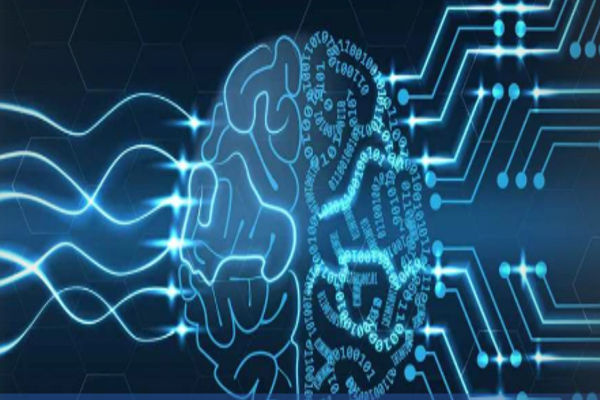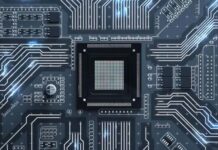In an era defined by digital transformation, innovation is reshaping every corner of the technology landscape. Among the most significant developments is the convergence of Testing and Measurement (T&M) with Artificial Intelligence (AI) and Machine Learning (ML). Traditionally, T&M processes have relied on rule-based systems and manual intervention. The transformation of testing and measurement in the age of intelligence is driven by the integration of artificial intelligence (AI) and technology, leading to more efficient, accurate, and personalized assessments. AI is automating tasks, enhancing data analysis, and enabling adaptive testing, while also expanding the scope of assessment beyond traditional cognitive abilities to include emotional and social intelligence. However, the increasing complexity of modern systems presents new challenges—greater data volumes, more intricate test scenarios, and the demand for real-time insights. To meet these demands, Artificial Intelligence (AI) and Machine Learning (ML) are being integrated into T&M processes, bringing transformative capabilities that promise to revolutionize the field. AI and ML are now stepping in to elevate T&M practices to new levels of intelligence, efficiency, and precision.
The Role of AI/ML in Testing and Measurement
AI/ML offers a paradigm shift in how we approach testing and measurement. Instead of rigid scripts and predefined test cases, AI algorithms can learn from historical data, recognize patterns, predict issues, and even optimize the entire testing process. AI is automating repetitive tasks in testing, like generating test cases and analyzing results, saving time and resources.
For example, anomaly detection powered by ML can automatically identify faults in real-time, which may be difficult for human engineers to spot. Similarly, predictive maintenance uses historical sensor data to forecast equipment failure, minimizing downtime and reducing costs. In software testing, ML can even suggest automated test case generation by analyzing historical defect patterns, enabling a more thorough and data-driven approach.
Another powerful application is intelligent sampling. Instead of collecting and analyzing vast volumes of redundant data, AI models can identify which subsets of data are most relevant, thereby reducing test time, storage requirements, and computational overhead.
Key Capabilities of AI/ML in T&M
- Anomaly Detection and Pattern Recognition
AI algorithms, especially those based on supervised and unsupervised learning, can identify deviations from normal behavior in system data. This capability is particularly useful in real-time signal processing, where anomalies may indicate impending failures or malfunctions.
- Predictive Maintenance
One of the most significant benefits of AI in T&M is its role in predictive analytics. By analyzing historical and real-time sensor data, ML models can predict equipment degradation or failure before it happens, enabling timely maintenance and reducing downtime.
- Automated Test Case Generation
AI can learn from existing test logs and system behavior to automatically generate relevant test cases, especially in software and embedded system testing. This drastically reduces manual effort and improves test coverage.
- Intelligent Data Sampling
ML techniques can be used to filter redundant or non-informative data, focusing only on critical metrics. This not only reduces the volume of data to be stored and analyzed but also accelerates the test cycle.
Industry Applications of AI/ML in T&M
The impact of AI/ML in T&M spans a wide range of industries:
- Electronics and Semiconductors: AI-driven test systems speed up chip validation, reduce the cost per test, and provide real-time yield analytics. ML models help in identifying root causes of failures across wafer lots.
- Telecommunications: Telecom companies use AI to monitor network performance, identify bottlenecks, and dynamically adjust resources to maintain service quality.
- Automotive: As vehicles become increasingly autonomous, testing Advanced Driver-Assistance Systems (ADAS) and other electronics requires AI simulation platforms to cover diverse real-world scenarios.
- Healthcare: AI enhances diagnostic tools by analyzing data from medical imaging and sensors, ensuring that medical equipment passes safety and efficacy tests.
- Manufacturing and Industry 4.0: In smart factories, AI integrates with IoT devices to perform automated, real-time quality control and system diagnostics.
Benefits of Integrating AI/ML in T&M
Integrating AI/ML into T&M systems yields significant benefits:
- Faster and Smarter Testing: AI models can quickly adapt to new products or testing requirements without reprogramming.
- Improved Accuracy: ML reduces human error by continuously learning from data and improving over time.
- Cost Efficiency: Predictive analytics and automation reduce operational costs and increase return on investment.
- Real-Time Insights: AI provides immediate feedback and decision support, enabling proactive interventions.
- Scalability: AI systems handle large volumes of data and scale with increased complexity in products or systems.
Challenges to Overcome
Despite its promise, AI in T&M is not without challenges:
- Data Quality and Availability: High-quality, labelled datasets are essential for training effective ML models.
- Model Interpretability: In safety-critical domains, stakeholders demand transparency in how AI makes decisions.
- Regulatory Compliance: AI models must align with industry regulations and standards, adding another layer of complexity.
- Ethical considerations:
While AI offers numerous benefits, it’s crucial to address ethical considerations, such as data privacy and potential biases in algorithms.
Future Outlook: Where T&M is Heading
The future of T&M is intelligent, adaptive, and increasingly digital. Advancements in explainable AI will make ML decisions more transparent, building trust in automated systems. Digital twins—virtual replicas of real systems—will allow for simulation-based testing in controlled environments. Federated learning will enable collaborative model training without sharing raw data, preserving data privacy across organizations.
Moreover, AI-powered co-pilots for test engineers will act as smart assistants, guiding them through complex testing scenarios, while AR/VR interfaces will enhance human-machine interaction in physical test environments.
Conclusion
The intersection of AI/ML and T&M represents a transformative step toward smarter, more efficient, and more adaptive testing systems. As products and technologies grow more sophisticated, so must our methods of evaluating them. By embracing AI-driven T&M, industries can unlock new levels of quality assurance, operational efficiency, and innovation. The future belongs to those who test intelligently—and with AI, that future is already here.
















